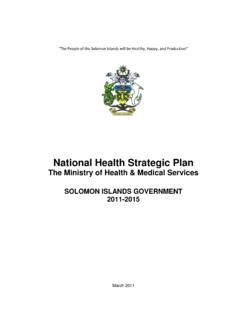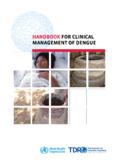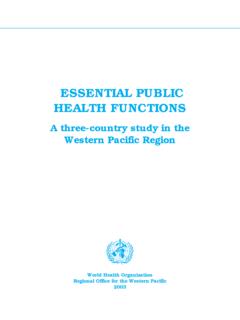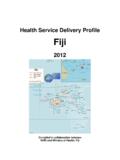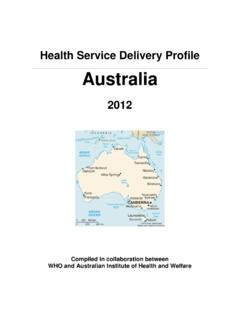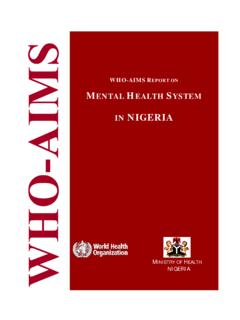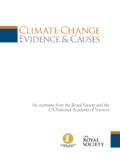Transcription of Towards - WPRO | WHO Western Pacific Region
1 TowardsEvidence-based Suicide Prevention ProgrammesWHO Library Cataloguing in Publication DataTowards evidence -based suicide prevention Suicide - prevention and 978 92 9061 462 3 (NLM Classification: W822) World Health Organization 2010 All rights reserved. Publications of the World Health Organization can be obtained from WHO Press, World Health Organization, 20 Avenue Appia, 1211 Geneva 27, Switzerland (tel.: +41 22 791 3264; fax: +41 22 791 4857; e-mail: Requests for permission to reproduce or translate WHO publications whether for sale or for noncommercial distribution should be addressed to WHO Press, at the above address (fax: +41 22 791 4806; e-mail: For WHO Western Pacific Regional Publications, request for permission to reproduce should be addressed to the Publications Office, World Health Organization, Regional Office for the Western Pacific , Box 2932, 1000, Manila, Philippines, Fax. No. (632) 521-1036, email: designations employed and the presentation of the material in this publication do not imply the expression of any opinion whatsoever on the part of the World Health Organization concerning the legal status of any country, territory, city or area or of its authorities, or concerning the delimitation of its frontiers or boundaries.))
2 Dotted lines on maps represent approximate border lines for which there may not yet be full mention of specific companies or of certain manufacturers products does not imply that they are endorsed or recommended by the World Health Organization in preference to others of a similar nature that are not mentioned. Errors and omissions excepted, the names of proprietary products are distinguished by initial capital reasonable precautions have been taken by the World Health Organization to verify the information contained in this publication. However, the published material is being distributed without warranty of any kind, either expressed or implied. The responsibility for the interpretation and use of the material lies with the reader. In no event shall the World Health Organization be liable for damages arising from its use. Table of ContentsPreface ..vAcknowledgements ..viiiChapter 1: Introduction ..1 The public health approach.
3 3 The public health approach processes ..5 Illustration of public health approach in suicide prevention ..7 The public health approach in practice ..8 Chapter 2: Formulation and evaluation of suicide prevention programmes ..9 Need for effective suicide prevention programmes ..9 Key elements in formulating suicide prevention strategies ..10 Comprehensiveness ..10 Empirical evidence ..10 Measurable outcomes ..10 Subject to change ..10 Sustainability ..11 Criteria for effective interventions ..11 Empirically established conceptual framework ..11 Clear identification of target individuals ..11 Carefully planned intervention/preventative measures ..11 Systematic evaluation ..12 Measurable outcome indicators for interventions ..12 Major outcomes for interventions ..12 Associated outcomes for interventions ..13 Examples of evidence -based suicide prevention programmes ..15 Worldwide ..16 Western Pacific Region ..27 Chapter 3: A snapshot of suicide prevention interventions in the Western Pacific Region .
4 37 Chapter 4: Priority ..51 Surveillance and monitoring ..52 Epidemiologic research ..52 evidence -based prevention and intervention programmes ..52 Universal level ..53 Selective level ..53 Indicated level ..54 Evaluation ..54 References ..56 Towards evidence -Based Suicide Prevention ProgrammesvPrefaceSuicide is a global challenge. It poses a serious public health problem worldwide. It has accounted for nearly 1 million deaths and an estimated 10 million attempted suicides each year. It is estimated that approximately 32% of all suicide deaths have occurred in the Western Pacific Region (Hendin et al. 2008, Yip 2008), which is disproportionately found in this area consisting of 37 countries and areas with a total of billion people or about 29% of the world s population. It is estimated that, in this Region , the suicide rate is calculated to be about per 100,000 (De Leo, Milner and Wang 2009). Suicide rates in some countries/areas like Japan, the Republic of Korea and Taiwan, China have had significant increases recently and remained at historically high levels.
5 Suicide is the leading cause of death among young people in this Region and has caused significant economic losses to society. The full impact of the world s current economic crisis has yet to be realized, but it s certain to have an effect on mental health and suicide. It is unfortunate as well that suicide prevention resources are limited and underdeveloped, especially in developing countries, which have the largest need for resources and monograph attempts to set out the basic framework for suicide prevention strategies. It provides details in formulating and evaluating suicide prevention programmes. The public health approaches suggested offer a multilayer intervention model, which has been adopted by a number of developed countries for setting up national prevention strategies. Nevertheless, we want to stress that there is no single solution in dealing with suicide in a heterogeneous environment: one size simply doesn t fit all.
6 Also, all suicide prevention programmes need to be evaluated. And where we do not have the necessary evidence , we must simultaneously implement novel approaches and rigorously evaluate them. Anything less is undesirable. The importance of evaluation is even more critical in Asia, partly due to culture and limited resources. We have included the details of some well-established suicide prevention programmes worldwide and in the Western Pacific Region . They have been shown effective in reducing the number of suicides and/or its associated outcome viTowards evidence -Based Suicide Prevention ProgrammesPrefaceindicators. We hope that by publishing this monograph more cultural-specific programmes on suicide prevention can be developed in the Region . The more we know, the more we can learn from one another about effective suicide prevention strategies. The need for suicide prevention is increasing, especially in the populous countries in the Region .
7 The applicability of the public health approaches for suicide prevention in developing countries has yet to be established due to the diverse economic and sociocultural are significant differences in resource availability in implementing suicide prevention programmes among countries in the Region . We highlight important features of some evidence -based programmes. Recognizing the many factors that put people at risk of suicide and protecting them against those factors, we believe that only strategies from multiple levels and disciplines can help in reducing suicides substantially. Effective actions should be evidence -based and multilayered. The effectiveness of prevention programmes should also be evaluated by measurable outcomes. In addition, programmes should be adaptive and open for improvement based on the evaluation monograph outlines fundamental principles, many of which have been ignored in the past, to develop community suicide prevention programmes.
8 We advocate the formulation of a task force that will lead the implementation of an operational plan and develop schedules for a coordinated community-based suicide prevention strategies. It is not a static process but rather a continuous and evolving strategy, which advocates sustainable development on suicide prevention based on the best research knowledge available and the cooperation of all stakeholders in the community. Any nationwide suicide prevention programme ideally should be supported by government so that it works more effectively among all the stakeholders in the community. The task force should be financially sustainable. Moreover, partnership and cooperation will be emphasized, building upon many activities within the community that have already contributed to suicide prevention. Suicide prevention is multidimensional, whether we are speaking of the need to tailor diverse solutions for different cultures or develop distinctive approaches for various segments of the population within a country.
9 In other words, one size doesn t fit all . Each of us must develop culturally attuned, locally relevant and evidence -based suicide prevention programmes. Towards evidence -Based Suicide Prevention ProgrammesviiPrefaceWe have seen some significant progress in understanding suicide and its prevention in Hong Kong (China) over the past 10 years. We wish to share some of our research experiences (both successful and unsuccessful) into coordinated strategies. This monograph aims to extend current knowledge and promote ongoing discourse within the community and in the Region . The guidance in this document needs to be continuously updated and modified, and we must remain open and responsive in light of new discussions and evidence . We cannot emphasize any more that suicide is everyone s business. It is only when individuals representing every facet of our communities come together and work together to confront this serious problem can the tragedies and sufferings of affected families and friends be reduced.
10 Minimizing the number of suicides has always been a challenge. However, by using available resources effectively while identifying new resources, we certainly can make a evidence -Based Suicide Prevention ProgrammesAcknowledgementsThe Western Pacific Region of the WHO gratefully acknowledges the authors who wrote this monograph: Professor Paul Yip & Ms Yik-wa Law, both affiliated with Centre for Suicide Research & Prevention, University of Hong Yip is the Director of the Centre for Suicide Research and Prevention (CSRP) and a professor of the Department of Social Work & Social Administration, the University of Hong Kong (HKU). He is also the Vice-President of the International Association for Suicide Prevention. Law is a social worker and a Candidate (HKU) who has been actively involved in developing suicide prevention programmes. She is also a core team member of CSRP, HKU and is appointed as a Professional Member of the China National Suicide Prevention and Crisis Intervention Association.


